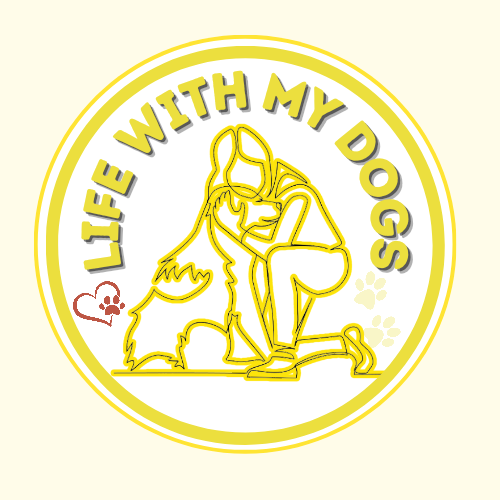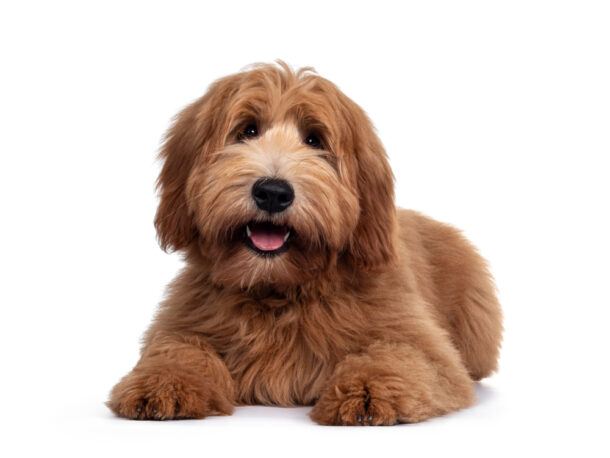LifeWithMyDogs is supported by our audience. When you purchase through one of our links, we may earn a small affiliate commission. As an Amazon Associate I earn from qualifying purchases. Your cost is not affected.
**********
Mistakes to avoid when grooming your dog might seem like common sense, but even the most seasoned pet parent can fall victim to them. From bath time blunders to nail trimming nightmares, these missteps can leave your pup feeling stressed and uncomfortable. But fear not, fellow dog lovers! This guide will equip you with the knowledge to navigate the wonderful world of at-home dog grooming, ensuring a positive experience for both you and your furry companion.
As a professional groomer, I encourage pet owners to keep their pets well-groomed between visits. Sometimes they would call me, frustrated with home grooming. When I took the time to explain proper techniques and help them understand the common mistakes to avoid when grooming your dog at home, both dog and owner were much happier!
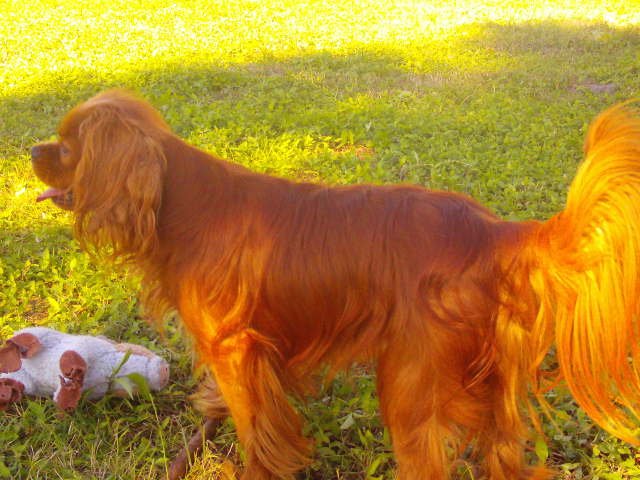
well-groomed Cavalier King Charles Spaniel
Grooming your dog at home can be a rewarding experience that strengthens your bond and ensures your pet’s cleanliness and comfort. However, without the appropriate knowledge and techniques, it’s possible to make mistakes that could compromise your dog’s well-being or create unnecessary stress for both of you. From preparing your grooming space to the actual act of grooming—from brushing and combing to bathing and drying—it’s important to proceed with care and awareness of common pitfalls.

We’ll delve into understanding your dog’s coat type, selecting the right tools, and mastering essential techniques for a stress-free grooming routine. Let’s get started and turn grooming into a bonding experience you’ll both enjoy!
Common Mistakes to Avoid When Grooming Your Dog at Home
Understanding the specific needs of your dog’s coat type, alongside proper equipment and a calm environment, can turn grooming sessions into a positive routine. Bathing your dog too frequently or with the wrong products can strip their coat of natural oils, while incorrect drying techniques can lead to skin irritation. Nail trimming, ear cleaning, and dental hygiene are key aspects of grooming that, if done incorrectly, can cause discomfort or even health issues for your dog. Gaining insights into the right methods and avoiding common mistakes will ensure that home grooming is a beneficial process for your furry friend.
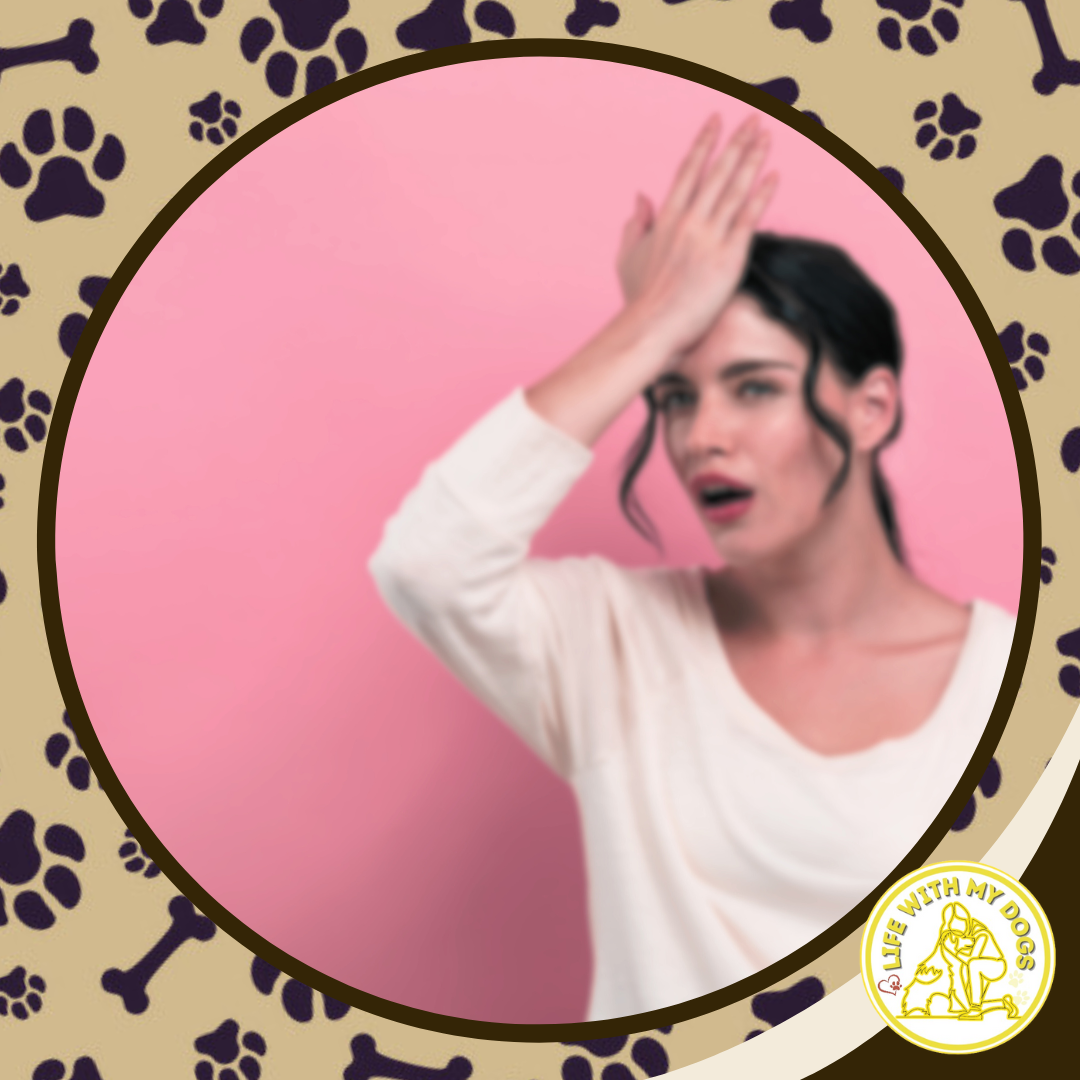
Key Takeaways
- Proper preparation and understanding coat needs prevent stress and discomfort.
- Correct bathing and drying techniques protect your dog’s skin and coat health.
- Regular maintenance of nails, ears, and teeth is crucial for overall well-being.
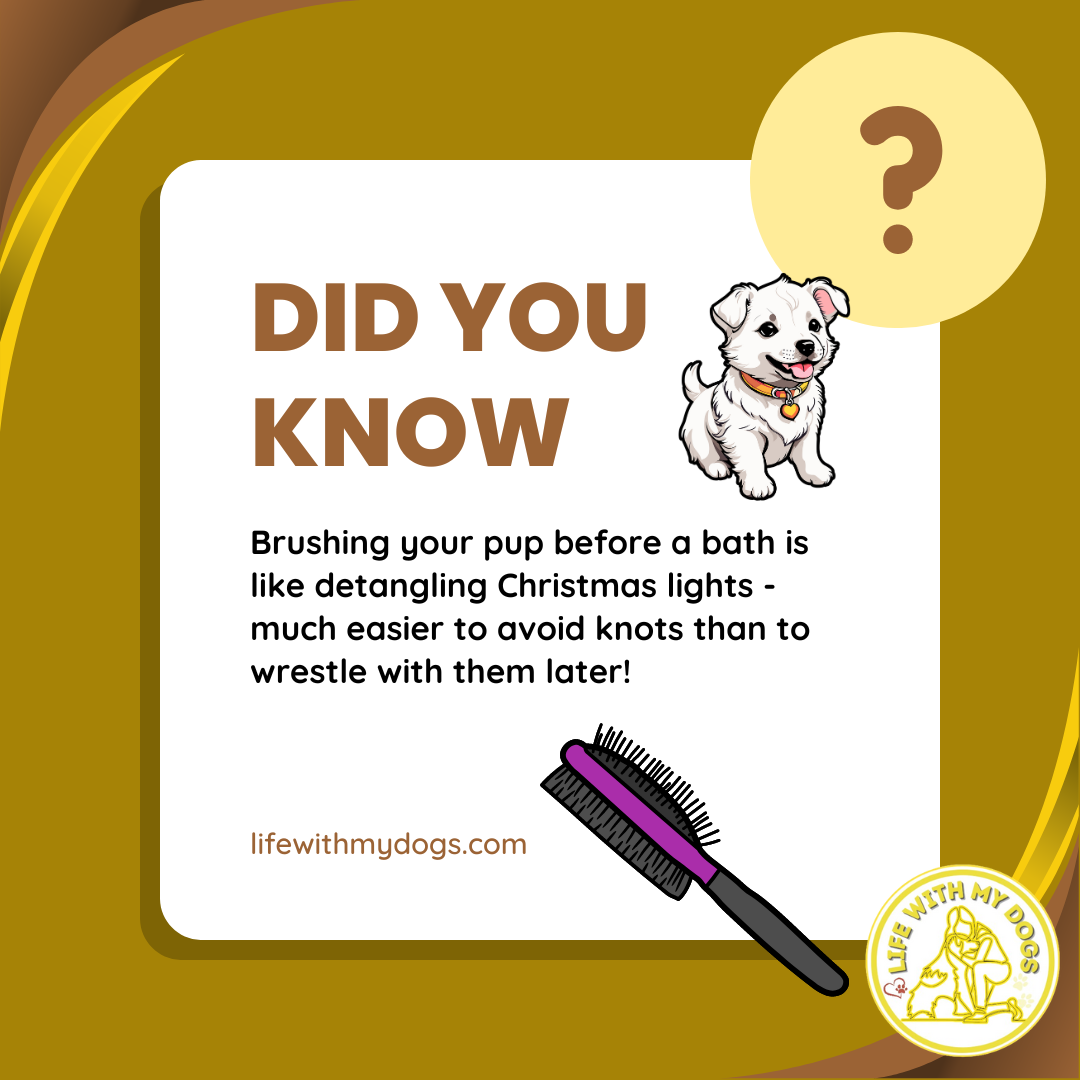
Understanding Your Dog’s Coat
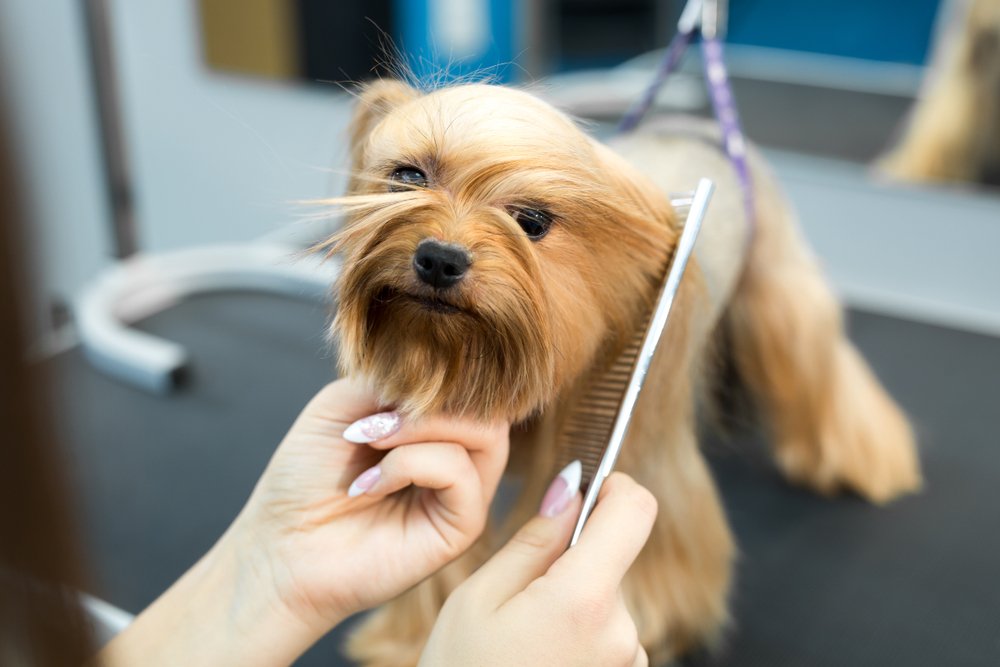
Proper grooming starts with an appreciation for the unique characteristics of your dog’s coat. Each type has specific grooming needs that are essential for your pet’s health and appearance.
Identify Your Dog’s Coat Type
Your dog’s coat may fall into one of several categories, each with distinct qualities. The main types include:
- Smooth Coats: Short and close-lying. Example: Beagles.
- Double Coats: A soft undercoat beneath a coarser topcoat. Example: Huskies.
- Wire Coats: Rough and bristly. Example: Terriers.
- Long Coats: Flowing and may be silky or coarse. Example: Shih Tzus.
- Curly Coats: Small, tight curls. Example: Poodles.
- Hairless: Virtually no coat. Example: Chinese Crested.
Recognize the Needs of Different Coats
- Smooth Coats: Require regular brushing to remove loose hairs.
- Double Coats: Need frequent brushing to reduce shedding and prevent matting, especially during seasonal changes.
- Wire Coats: Often require hand-stripping or professional grooming to manage.
- Long Coats: Prone to tangles and matting; regular combing and occasional trimming are necessary.
- Curly Coats: Should be brushed often to prevent mats and may need professional grooming to maintain the coat’s shape.
- Hairless: Although not requiring brushing, these dogs need protection from the sun and regular skincare to prevent blemishes.
Preparing for Grooming
Before embarking on grooming your dog at home, it’s essential to set the stage properly. Preparation can make the difference between a smooth grooming session and a stressful one, both for you and your dog.
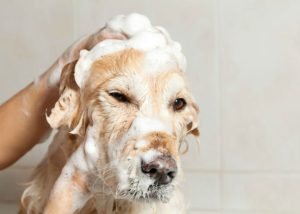
Assembling the Right Tools
To begin, ensure you have all the necessary tools for grooming. The essentials typically include:
- Brushes and combs: Different types of fur may require different brushes, like slicker brushes for detangling or bristle brushes for smoother coats.
- Shampoo and conditioner: Use products formulated specifically for dogs to avoid skin irritation.
- Clippers: If trimming is needed, quality clippers can safely navigate through fur.
- Nail trimmers: Keep your dog’s nails short to prevent overgrowth and splintering.
- Scissors: Have a pair of grooming scissors to tidy up longer fur and trim around sensitive areas.
- Towels and a dryer: For drying off your dog post-bath without causing them to become cold or uncomfortable.
Remember, always opt for high-quality, well-maintained tools for the best grooming experience.
Creating a Calm Environment
A relaxed setting is paramount for a stress-free grooming session:
- Choose a quiet, comfortable space where your dog feels safe.
- Provide a non-slip surface, such as a bath mat or towel, to ensure your dog’s stability.
- Introduce grooming tools to your dog gradually to avoid creating a negative association.
- Maintain a routine, so your dog knows what to expect during grooming sessions.
By following these steps, you’re setting the groundwork for successful at-home dog grooming.
Bathing Blunders
Bathing your dog at home can save you trips to the groomer, but it’s important to avoid common mistakes to ensure your pet’s comfort and health. Pay close attention to water temperature and how you apply shampoo for a safe and effective bath.
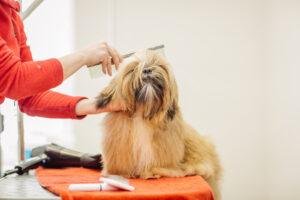
Avoiding Water Temperature Extremes
When bathing your dog, it’s crucial to use lukewarm water. Water that’s too hot or too cold can cause discomfort or even harm your pet. A good rule of thumb is to aim for a temperature similar to what you’d use for a baby’s bath – comfortable to the touch but not warm enough to turn red.
Proper Shampoo Application
Apply dog-specific shampoo evenly across your pet’s coat. Start from the neck and work your way down to the tail, avoiding the eyes and ears. Thoroughly rinsing the soap from your dog’s fur is essential; leftover suds can irritate the skin. Remember to use a gentle pressure with your fingers to massage the shampoo into the coat, reaching through to the skin while being careful not to scratch with your nails.
Drying Techniques
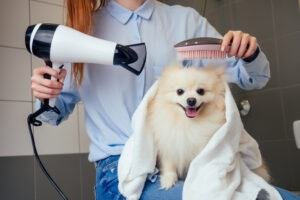
When grooming your dog, properly drying your pet is crucial to prevent discomfort and potential health issues. Incorrect drying methods can lead to skin irritation, matting, or overheating.
Using Towels Appropriately
After bathing your dog, begin by gently squeezing excess water from the coat with your hands before towel drying. This helps minimize the amount of moisture the towel needs to absorb. Use a towel by patting and pressing it against the fur rather than rubbing, as rubbing can cause tangles and mats to form. The technique described at Dog Grooming Tutorial suggests lifting your dog slightly with one hand under their belly, while wrapping the towel over and under your pet with the other hand, ensuring comfort and security during the process.
Safe Blow-Drying Practices
Blow-drying can be safe and effective when done correctly. Always use a low heat setting to start and keep the dryer at a comfortable distance from your dog’s skin to prevent burns. Moving the dryer continuously can help distribute heat evenly and avoid concentrating it on one spot. It’s essential to be aware of how your dog is reacting to the blow-drying process; if they seem distressed or uncomfortable, take a break or try another method. As pointed out by Groomer to Groomer, using dryers as intended and understanding the specific types of dryers and their appropriate use is key to safe practice.
Brushing and Combing Mistakes
Regular grooming is vital for your dog’s health, but common mistakes during brushing and combing can lead to discomfort and skin issues. It’s crucial to use the correct tools and methods.
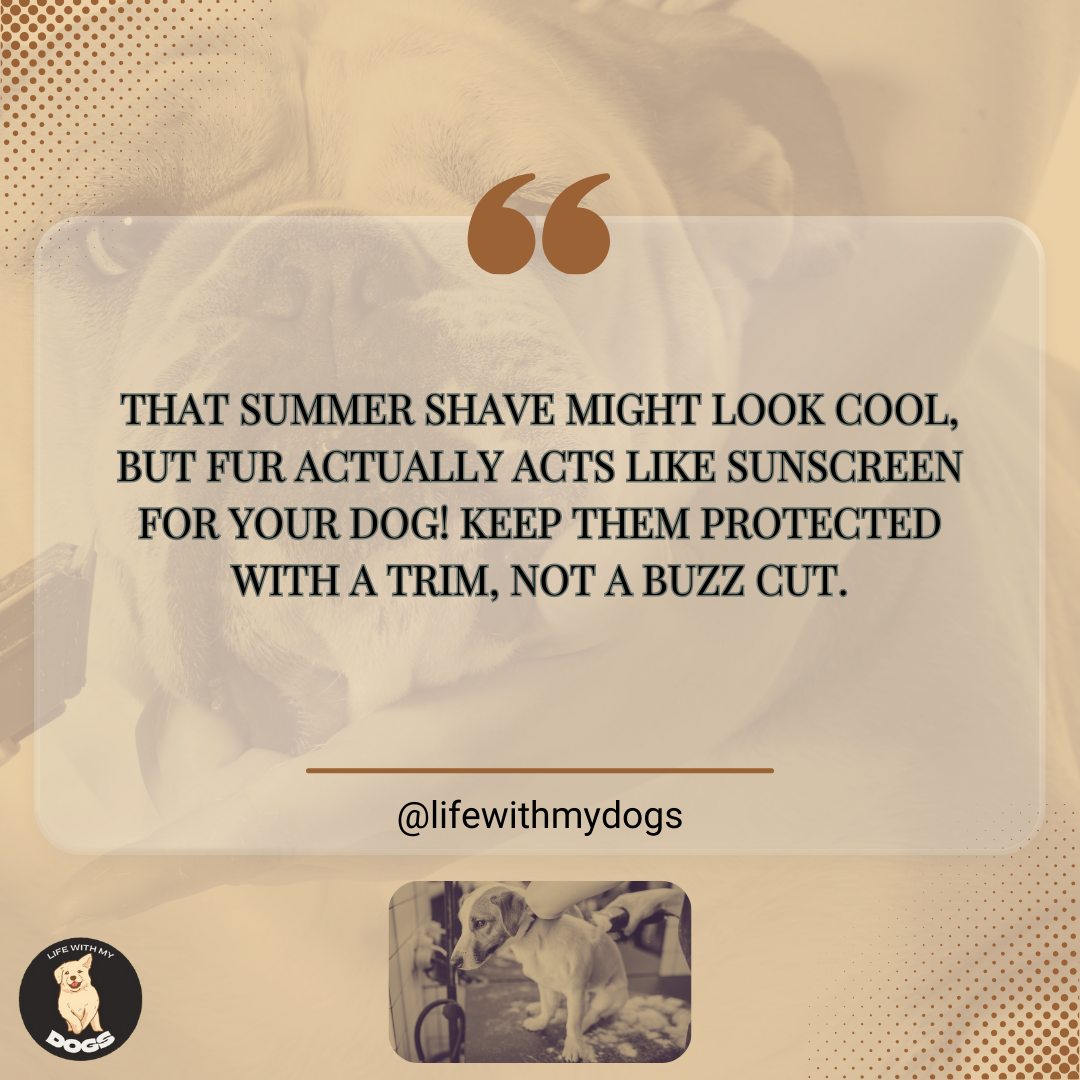
Choosing the Right Brush
Selecting a brush that suits your dog’s coat type is essential. For dogs with short hair, a bristle brush works well, while a slicker brush can help detangle and remove loose fur from longer coats. Using the wrong type of brush can lead to skin irritation or failing to remove all the dead hair, which might cause matting and discomfort.
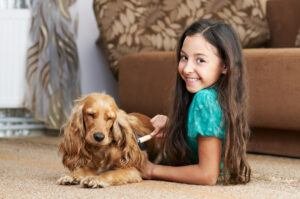
Gentle Combing Methods
When combing your dog, use gentle, slow strokes to avoid pulling on the fur which can cause pain or damage to their skin. Start at the head and work your way down, combing in the direction of hair growth. If you encounter knots, hold the fur at the base to minimize tugging on the skin. When you’re dealing with tangles, never pull too hard, and consider using a detangling spray or conditioner to make the process easier.
Nail Trimming Tips
When grooming your dog at home, paying close attention to nail trimming can prevent discomfort and health problems associated with overgrown nails. This section will guide you through the process, emphasizing how to avoid harming the quick and choosing the appropriate tools.
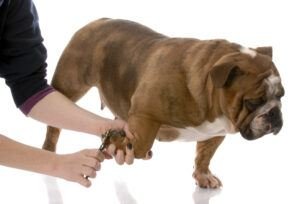
Avoiding Quick Cutting
The quick is the part of the nail that contains nerve endings and blood vessels. It’s important to avoid cutting this sensitive area as it can be painful and may lead to bleeding. To do so:
- Inspect the nail: Look for a pinkish area within the nail where the quick is located, especially if your dog has clear nails.
- Trim gradually: Cut small slices of the nail bit by bit, rather than making one large cut. This reduces the chances of cutting the quick.
If your dog has dark nails where the quick is not visible, trim tiny amounts at a time and look for a dark spot in the center of the nail, which often indicates you’re getting close to the quick. For a visual guide on avoiding the quick, see trimming techniques.
Using Correct Nail Clippers
Choosing the correct nail clippers is essential for a smooth and safe nail-trimming session.
- Types of nail clippers: There are scissor-style and guillotine-style clippers. Scissor-style clippers are generally better for larger breeds with thicker nails, while guillotine clippers are suitable for smaller dogs with thinner nails.
- Keeping clippers sharp: Dull clippers can crush the nail and cause discomfort, so ensure they are sharp for a clean cut.
It is also worth considering a nail grinder if your dog is nervous about clippers or if you’re looking for a way to smooth out rough edges. For considerations on choosing the proper tool, refer to common nail trimming mistakes to avoid.
Ear Cleaning Care
Consistent and proper ear cleaning is crucial to your dog’s grooming routine, preventing infections, and maintaining ear health.
Preventing Infections
Regular ear cleaning is a preventive measure that can reduce the risk of ear infections in your dog. Ear cleaning solutions play a significant role in this process; using them correctly is key. For optimal cleaning, completely fill the ear canal with a vet-recommended ear cleaning solution until you see the fluid pooling in the ear canal, then massage the base of the ear to help break up wax.
Gentle Handling and Cleaning
It’s important to handle your dog’s ears with care to avoid any damage. Avoid using cotton-tipped swabs; they can push debris further into the ear canal and potentially cause harm. Instead, after applying the cleaning solution, use a cotton ball or soft cloth to wipe out the ear canal gently. By doing so, you will remove the excess liquid and as much debris as possible without causing any discomfort or injury.
Remember, the key to successful ear cleaning is a combination of the right techniques and gentle handling.
Dental Hygiene Practices

Maintaining your dog’s dental health is critical to avoid plaque build-up and dental diseases. Focus on consistent teeth cleaning and using the right products.
Regular Teeth Brushing
You should brush your dog’s teeth several times a week using a canine-friendly toothbrush and toothpaste. Start by getting your dog accustomed to having its mouth handled before progressively moving to brushing. Use circular motions, targeting the gum line where plaque tends to accumulate.
Selecting Suitable Dental Products
It’s essential to choose toothpaste specifically designed for dogs, as human toothpaste can be toxic to them. Also, opt for toothbrushes with soft bristles or fingertip brushes if your dog prefers. Chew toys that are specially made to strengthen teeth can be beneficial, but always ensure they are size-appropriate and non-destructive to your dog’s teeth.
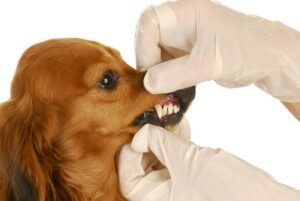
Haircut and Trimming Tactics
In dog grooming, precision with haircuts and avoiding injury are critical. Proper tools and techniques ensure a safe and attractive outcome.
Maintaining Even Cuts
To maintain even cuts across your dog’s coat, use sharp, clean clippers and work from the head towards the tail, moving against the grain of the fur for a uniform length. Starting with a longer guard comb attachment can prevent cutting too short too quickly. Regularly check the symmetry of the cut by visually comparing both sides and different angles as you progress.
Avoiding Skin Nicks
Prevent skin nicks by holding the skin taut and clipping slowly. Pay attention to the contours of your dog’s body, especially in areas where the skin folds or is loose. Use scissors with rounded tips for sensitive areas like around the face and paws. Always keep the blade flat against the skin and avoid tilting the clippers, as this can increase the risk of cuts.
Quick Review
We’ve covered a lot in a short time. Let’s review the common mistakes to avoid when grooming your dog:
- Failing to train your dog for grooming – keep early sessions easy, relaxed, and happy
- Failing to brush before and after bathing – mats tighten up when wet
- Failing to groom in winter – dogs need grooming throughout the year
- Overbathing your dog – clean is good, skin irritation is not
- Using the wrong shampoo or conditioner – use the right products for your individual dog
- Using human products on your dog – people and pets require a different pH balance
- Clipping your dog’s nails too short – or, leaving them too long and causing discomfort
- Cutting your dog’s hair too short or unevenly – take small amounts off at a time to avoid skin problems
- Neglecting your dog’s ears, teeth, and eyes – all these need frequent attention, too
- Not checking for fleas, ticks, and other parasites, as well as skin problems – healthy skin and hair are essential
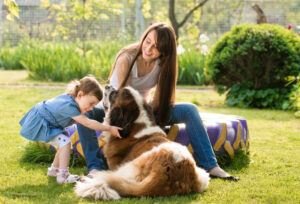
Mistakes to Avoid When Grooming Your Dog at Home: A Pawsitive Experience for All
By understanding your dog’s coat type, using the right tools, and following proper techniques, you can transform grooming from a chore into a bonding experience. Remember, avoiding common mistakes like overbathing, using harsh products, or improper nail trimming can keep your furry friend happy and healthy.
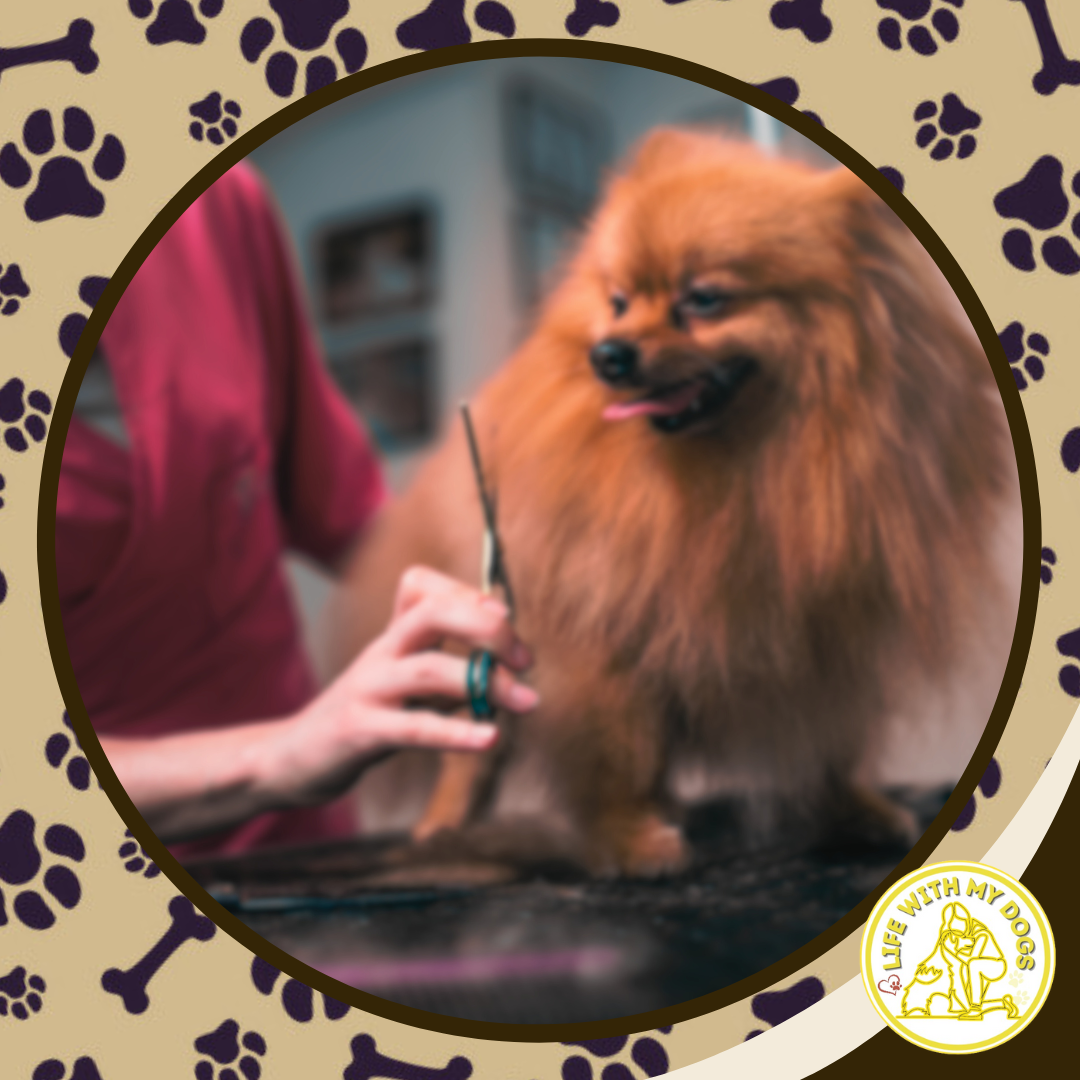
Thank you for reading! Now that you’re armed with this knowledge, are you ready to give home grooming a try? Remember, a little TLC goes a long way, and your pup will appreciate the extra attention.
Ready to pamper your pooch like a pro? We offer a wide range of high-quality grooming tools and dog-specific shampoos and conditioners to make your at-home grooming sessions a breeze. Visit our website or call us today to learn more!
Frequently Asked Questions
Ensuring your dog’s comfort and safety during grooming is as vital as achieving a well-groomed look. Here are some direct answers to common questions regarding at-home dog grooming.
What are the essential tools every pet owner should have for at-home dog grooming?
To effectively groom your dog at home, you’ll need a set of tools including a quality brush or comb, nail clippers, grooming scissors, a dog hair clipper with various guard sizes, and dog-specific shampoo and conditioner. Each of these can be simple to use. But know the proper way and the common mistakes to avoid when grooming with these tools
How can you effectively restrain a small dog during home grooming to ensure safety?
For small dogs, use a grooming table with a non-slip surface and an adjustable grooming arm with a leash to keep your dog in place gently. It’s important to reassure your dog with calm, steady interaction to reduce stress during grooming.
What are the indications that a grooming session is negatively affecting a dog?
Signs of stress, like persistent whining, trembling, avoidance behavior, or aggression, can indicate a grooming session is negatively affecting your dog. Monitor your dog’s behavior closely and adjust your techniques to make the process as comfortable as possible.
Can you groom a dog at home using standard clippers, and what are the steps involved?
Yes, you can use standard clippers for home grooming. Knowing the mistakes to avoid when grooming is essential when using scissors or clippers, too.
Begin with a clean and brushed coat, choose the right clipper size, and work in sections. Always move the clippers in the direction of hair growth and be extra cautious around sensitive areas.
What techniques can prevent a dog from sitting down during a grooming session?
Using positive reinforcement like treats and praise can encourage your dog to stay standing. You can also keep one hand under your dog’s belly to support and gently guide them to stay in the desired position throughout the session.
However, if your dog needs to sit occasionally, especially dogs with joint issues or old age, allow frequent rest times for them to do so.
Should you groom a dog's coat when it's wet or dry, and what are the implications of each method?
Generally, you should brush your dog’s coat when it’s dry to prevent breakage and discomfort. However, for some grooming tasks like trimming, a damp coat might be preferable for better control and a more even cut. Always use dog-specific grooming tools to ensure the best results regardless of the coat’s wetness.
Pampered Pups & Happy Humans!
Love your furry friend? Get expert grooming tips, see adorable pups, and connect with other pet parents on our social media!
- Facebook: lifewithmydogs.com
- Instagram: @lifewithmydogs2
- Pinterest: @lifewithmydogs2
- Twitter: @LifeWithMyDogs9
- YouTube: Life With My Dogs
